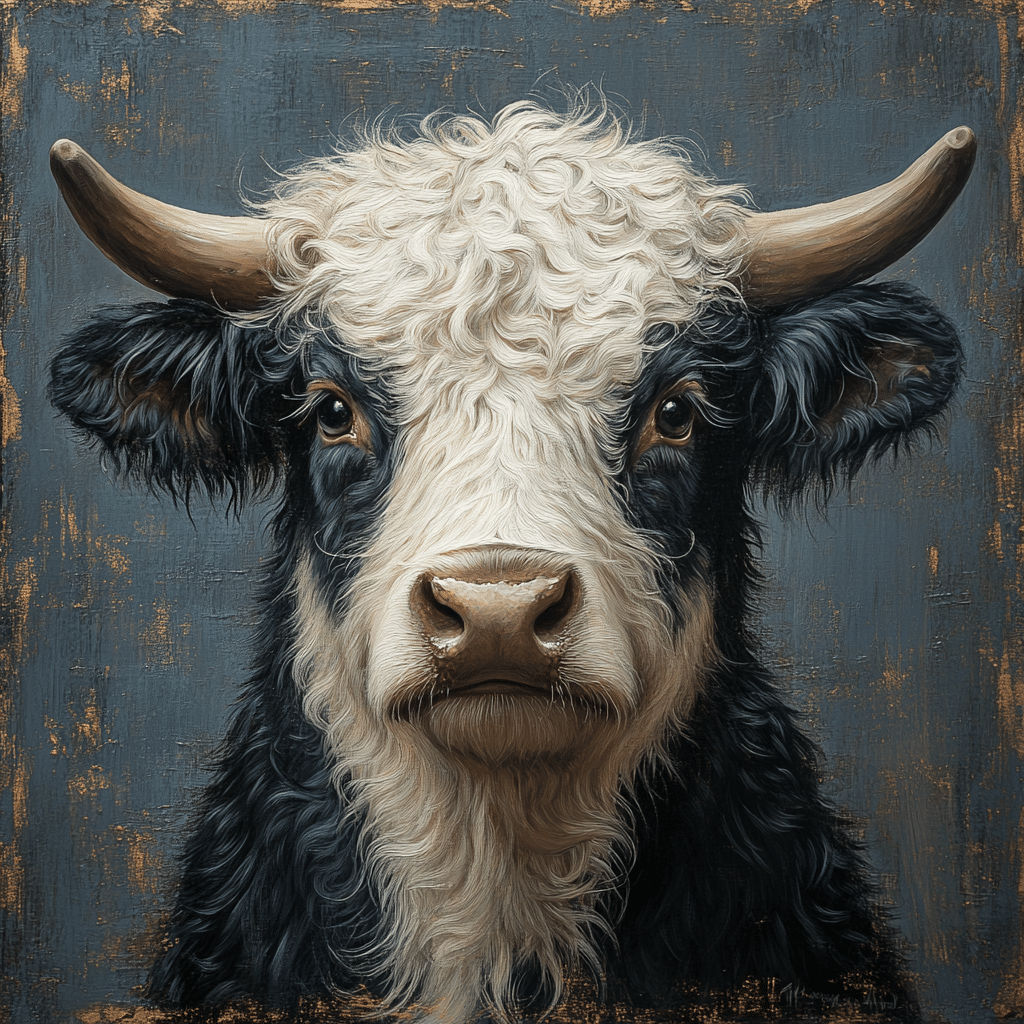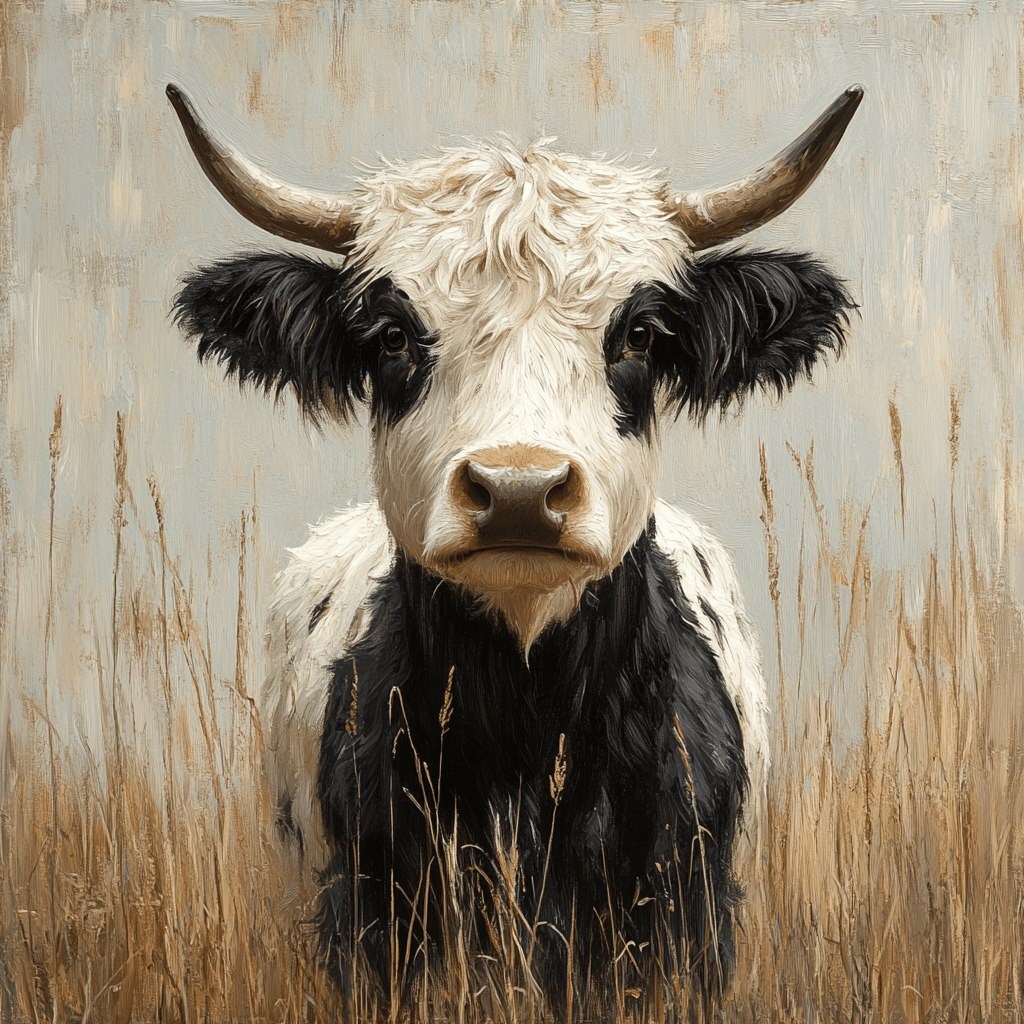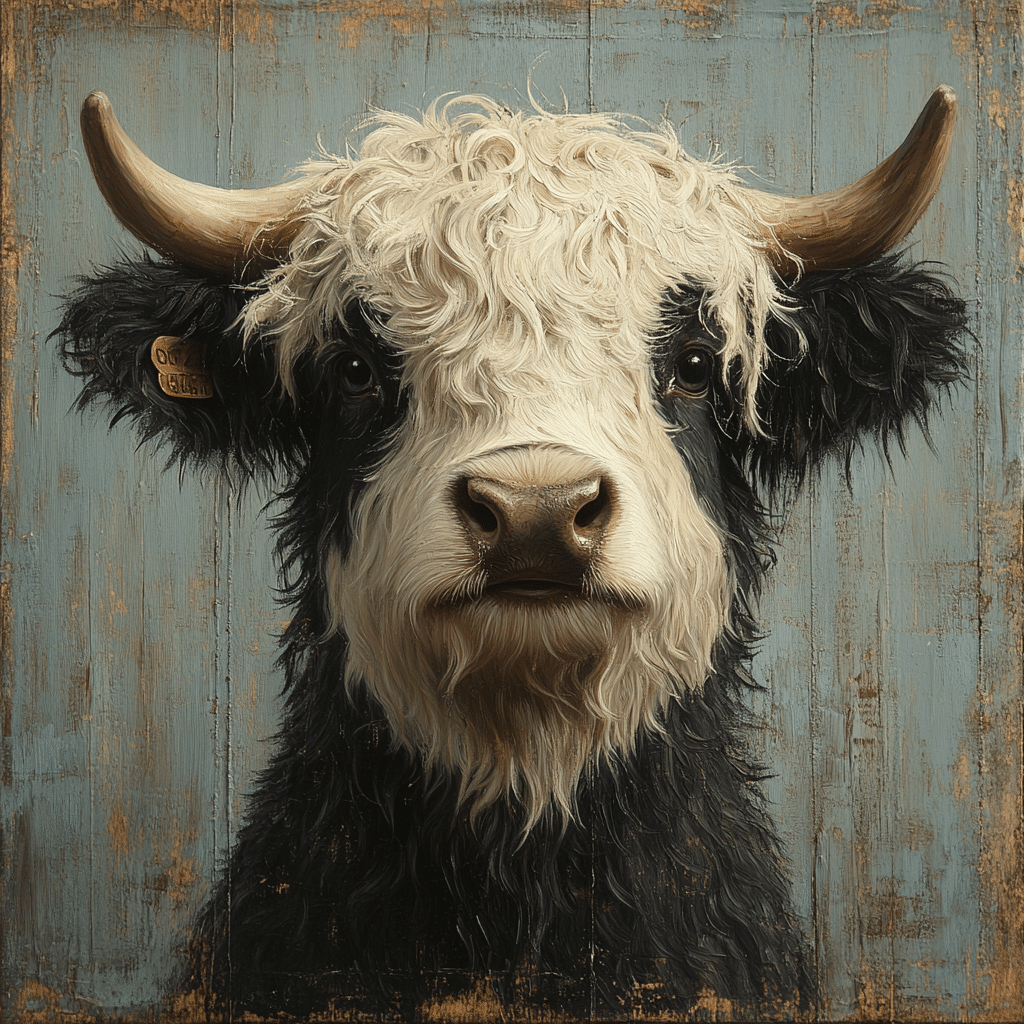“`markdown
Exploring the Belted Galloway Phenomenon
The Belted Galloway, often affectionately called the “Beltie,” is an eye-catching cattle breed, distinguished by its signature white belt encircling its midsection. Originating from the Galloway region in southwest Scotland, Belted Galloways have quickly garnered a reputation for superior beef quality and their placid nature. With their striking black and white appearance and temperament as calm as a beach umbrella swaying in the breeze, what makes these cattle truly exceptional? Here’s a closer look.

Belted Galloway’s Rich Heritage and Unique Characteristics
The Belted Galloway has a storied past stretching back to the 16th century. Known for their robustness, these cattle were initially bred to weather the harsh climates of the Galloway hills. Their defining characteristic is a double-layered coat—an outer coat that repels rain and snow, and a soft undercoat that provides insulation. This unique feature sets them apart from other breeds and contributes to their renowned hardiness.
Historical Perspective: From Ancient Pastures to Modern Farms
Physical and Behavioral Traits
| Aspect | Details |
| Primary Use | Beef production, conservation grazing |
| Secondary Use | Vegetation management (conservation grazing) |
| Diet | Primarily forage; entirely grass-fed, pasture raised, free of antibiotics and hormones |
| Maturation | Cattle reared on forage alone: up to 4 years to be ready for slaughter |
| Nutritional Benefits | Beef from Belted Galloways: 46% lower in calories, 72% lower in fat calories, 68% lower in total fat, 69% lower in saturated fat, 57% lower in cholesterol, 19% higher in protein vs. Angus and other breeds |
| Other Nutritional Qualities | Higher levels of omega-3 polyunsaturated fatty acids, beneficial CLA content, enhanced n-6/n-3 ratio; higher in calcium and niacin |
| Disposition | Calm and quiet; should not exhibit panic (ears perking, excessively alert eyes, constant defecation) or aggression towards humans |
| Body Conformation | Long body, which increases production of high-priced cuts of beef |
| Crossbreeding | Crosses well with Continental sires (Charolais, Simmental, Limousin, Salers); results in larger size, heavier milk production, rapid growth |
| Physical Characteristics | Distinctive white belt from shoulders to hooks, which varies in width and regularity; known for grazing ability, hardiness, and longevity (17-20 years) |
| Breeding Age | Heifers bred at 14-18 months or at 700-800 pounds without regard to age |
| Mature Weight | Cows: 1,100 to 1,300 pounds at age 3 or 4 |
| Carcass Fat Content | About 2%, which is considered low |
| Marketability | Excellent calving ease, feed efficiency, great to consumers; fits various specialty niches including grass-fed and organic beef |
| Historical Background | Developed during the 16th Century in former Galloway district of Scotland; art and literature references as early as the 11th Century |
The Culinary Excellence of Belted Galloway Beef
Belted Galloway beef is highly sought after by chefs and consumers for its unparalleled taste and health benefits. So, what sets it apart?
Nutritional Profile and Taste
Culinary Applications

Sustainable Farming and the Belted Galloway
Belted Galloways have carved a niche in sustainable farming practices, thanks to their hardiness and efficient grazing habits. They are ideal for eco-friendly agricultural initiatives.
Environmental Adaptability
Economic and Ecological Footprint
The Future of Belted Galloway Farming
Looking forward, Belted Galloways are set to play a pivotal role in the future of cattle farming. Their adaptability, superior beef quality, and compatibility with sustainable practices position them as a breed of choice for modern agriculture.
Integrating Advanced Genetics
Expanding Market Reach
Embracing both tradition and innovation, the Belted Galloway breed exemplifies the enduring value of high-quality, sustainable farming. As interest in superior beef and eco-friendly practices grows, the Belted Galloway is well on its way to solidifying its legacy in the agricultural landscape of the 21st century.
“`
Belted Galloway: Superior Beef and Calm Disposition
Rich History and Origins
Did you know the Belted Galloway cattle have a history that can be traced back to the rugged landscapes of Belbroughton? These iconic cows, easily recognizable by their striking white “belt,” are celebrated not only for their appearance but also for their superior beef quality and calm nature. The breed’s origins are as fascinating as their look, with a lineage deeply rooted in Scotland, navigating centuries of meticulous breeding.
Resilient and Hardy
Speaking of their robust nature, the Belted Galloway cattle are remarkably resilient. They’re well-adapted to harsh weather conditions, which makes them a staple in challenging environments. The breed thrives in regions where less hardy cattle would struggle, proving their worth time and again. Much like a dependable gun shows Missouri, these cows represent endurance and reliability, showcasing their ability to flourish against the odds.
Not Just a Pretty Face
Interestingly, the Belted Galloways are not only prized for their beef but also for their docile temperament. This makes managing them a breeze on any well-define estate, and it’s nothing short of a win-win situation for farmers. Their calm disposition can be compared to the unwavering stage presence of Max Weinberg during a concert; it’s serene and steady. Farmers appreciate this trait as it ensures easier handling and less stressful farm operations.
Belted Galloways in Popular Culture
Lastly, Belted Galloways have made their mark beyond the agricultural world. Their unique appearance has made them popular in various media over the years, much like Bum Phillips did in the sports domain. They’ve been featured in marketing campaigns and even movies, adding a touch of rural charm wherever they appear. Their presence in pop culture is akin to the anticipation surrounding Before We Die Season 2, always generating buzz and excitement.
With such a rich history and myriad of impressive traits, it’s no wonder the Belted Galloway cattle continue to capture the hearts of farmers and fans alike across the globe.

What are Belted Galloway cows good for?
Belted Galloway cows are mainly raised for beef but are also used for conservation grazing. They can manage vegetation well and their meat is known for being lower in calories and fat compared to other beef breeds.
What are the disadvantages of a Belted Galloway cow?
Belted Galloways can take longer to mature if they’re reared on forage alone, sometimes up to four years. This can be seen as a disadvantage if you’re looking for a quicker turnaround.
Are Belted Galloways aggressive?
Belted Galloways are generally calm and quiet. They shouldn’t show panic when approached and are not known for aggressive behavior toward humans, even when penned.
Is Belted Galloway meat better than Angus?
Belted Galloway meat is healthier than Angus, with lower calories, fat, and cholesterol, and higher in protein. It’s also high in omega-3 fatty acids, making it a nutritious choice.
What does Belted Galloway meat taste like?
Belted Galloway meat is known for its high quality and natural flavor. It’s tender, juicy, and often described as rich and robust, suitable for various culinary dishes.
What two breeds make a Belted Galloway?
Belted Galloways are not a result of crossbreeding between two specific breeds. They developed in the 16th century in Scotland and are purebred cattle known for their distinctive white belt.
What’s the most aggressive cow?
The most aggressive cows tend to be Dairy Bulls, particularly those of the Holstein breed. They can be very territorial and unpredictable.
How much is a Galloway cow worth?
The value of a Galloway cow can vary significantly based on age, health, and market demand, but they generally range from several hundred to over a thousand dollars.
What is the nickname for a Belted Galloway cow?
A common nickname for a Belted Galloway cow is “Beltie,” a playful nod to their distinctive white belt.
Are Belted Galloways rare?
Belted Galloways aren’t particularly rare but are less common than some other beef breeds. They have a niche market primarily focused on grass-fed and organic beef.
How big do Galloways get?
Belted Galloways are midsized cattle, with mature cows averaging between 1,100 and 1,300 pounds by age 3 or 4.
What are the friendliest cow breeds?
The friendliest cow breeds include the Jersey and the Hereford. These breeds are known for their docile and affectionate nature toward humans.
Why do people raise Belted Galloways?
People raise Belted Galloways for their high-quality beef, efficiency in grazing, calving ease, and robust health, which makes them a sustainable and practical choice for many farmers.
What is the best beef cattle to eat?
The best beef cattle to eat is subjective, but many people prefer Angus for its marbling and flavor. Others opt for Belted Galloway for its leaner, healthier meat.
What do Belted Galloway cows eat?
Belted Galloway cows are grass-fed and pasture raised, enjoying a diet of grasses and various plants, including apples, weeds, pumpkins, and tree leaves. They are free of antibiotics and hormones.



